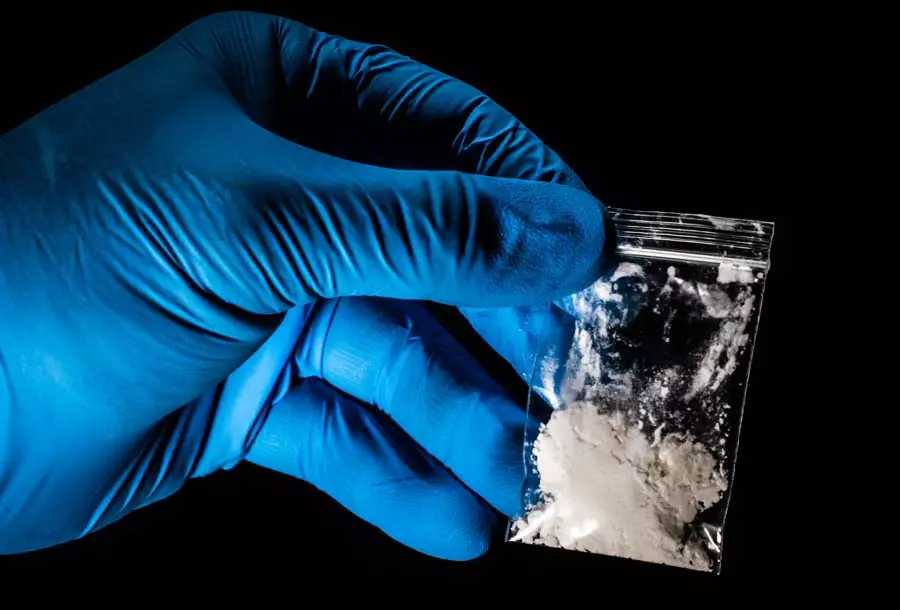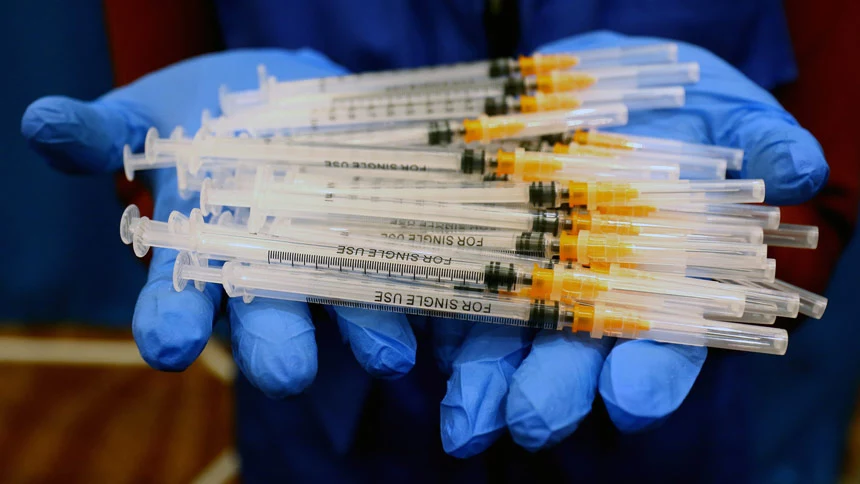What is a Fentanyl Test Strip?
Table of Contents
- What is a Fentanyl Test Strip?
- How Do Fentanyl Test Strips Work?
- What is Fentanyl?
- Can You Overdose on Fentanyl?
- What are the Signs of Fentanyl Overdose?
- Can Fentanyl Test Strips Help Combat Drug Overdose Rates?
- Harm Reduction Strategies for Combating Drug Overdoses
- Find the Right Addiction Treatment Options For You
Fentanyl test strips, or FTS, are a newer form of drug testing technology capable of detecting traces of Fentanyl in other substances. Originally designed for urinalysis, these test strips have become increasingly used to determine if drug samples have been laced with Fentanyl.
Unfortunately, this substance is being more and more commonly found mixed in with or sold disguised as other drugs. In these cases, individuals will take Fentanyl completely unaware, ultimately developing accidental addictions to this drug.
With this new trend and the various health dangers it poses, it is becoming more important than ever to test drugs for traces of Fentanyl or Fentanyl analogs, as even a small amount of this substance can be extremely dangerous, if not lethal.
How Do Fentanyl Test Strips Work?
Fentanyl test strips are relatively easy to use and can produce results within as little as five minutes of being introduced to a sample. This is done by dissolving a small amount of the substance into the water and then dipping the Fentanyl test strip into this solution for 15 seconds.
These test strips are very sensitive, meaning they are able to detect the presence of Fentanyl even in minimal amounts of a substance sample. Once enough time has passed, the test strip is then removed from the water, and placed on a flat surface.
The results of the Fentanyl test strip should appear within a few minutes. One line is an indicator that Fentanyl is present within a drug sample. Two lines, on the other hand, indicate a negative test result.
What is Fentanyl?

Fentanyl is a highly powerful and extremely addictive synthetic opioid. It can be medically used to treat individuals with chronic pain, particularly those who have developed a physical tolerance to other opioids, such as morphine.
However, while similar to morphine, Fentanyl is believed to be 50 to 100 times more potent than this drug. This means it also has a much higher risk for abuse and, by extension, potential overdose.
Unlike other unregulated drugs, Fentanyl’s high chance for addiction has earned this drug its classification as a Schedule II controlled substance by the Drug Enforcement Agency (DEA). This means that, while it has medical use, it is illegal for a person to use it without a prescription.
A Brief History of Fentanyl Overdoses and the American Opioid Epidemic
According to the Centers for Disease Control and Prevention (CDC), nearly 50,000 cases of overdose deaths occurred in 2019 alone, with an estimated 73% of these consisting of synthetic opioid (such as fentanyl) related overdoses.
These numbers, unfortunately, reflect the gradual worsening of what is referred to as the “Opioid Epidemic” that has been wracking the United States for years; and does not seem to be going away anytime soon.
Officially deemed a public health emergency in 2017 by the U.S. Department of Health and Human Services (HHS), this crisis has effectively reinforced a need to promote addiction education and awareness nationwide in order to reduce the stigma surrounding substance abuse.
With this increased education on addiction, individuals struggling with substance abuse may have a better chance of seeking out the professional treatment they absolutely need to achieve and maintain sobriety.
Furthermore, as cases of overdose deaths, whether Fentanyl-related or otherwise, continue to grow, so too does a need for new ways to test drugs; including, of course, Fentanyl test strips.
Can You Overdose on Fentanyl?
Compared to other substances, Fentanyl is a ridiculously potent drug. This means that it is not only possible to overdose on this substance, but it is extremely easy to do so. According to the Drug Enforcement Administration (DEA), 42% of pills that were tested for fentanyl were found to contain at least 2 mg of the drug.
This amount of fentanyl is considered to be a potentially lethal dose. Furthermore, most drug trafficking organizations will distribute this drug by kilogram. This is particularly concerning, as even just one kilogram of Fentanyl can kill up to 500,000 people.
Most people will use Fentanyl unknowingly, meaning they have no way of gauging how much of this drug they are using, let alone if their dosage may be lethal. Furthermore, if mixed in with another drug, such as heroin or cocaine, the side effects of this combination can be disastrous.
What are the Signs of Fentanyl Overdose?
Because of how dangerous this drug use can be, knowing the signs of Fentanyl overdose can potentially save lives. Someone who is overdosing on fentanyl may exhibit a number of symptoms, including:
- Low blood pressure
- Drowsiness
- Dizziness
- Nausea and vomiting
- Limpness
- Pupil dilation or retraction
- Cold and clammy skin
- Blue-tinted lips and fingernails
- Slowed or stopped breathing
- Low heart rate
- Loss of consciousness
- Coma
When it comes to opioid overdose, there are three particular symptoms that will occur as a result of this, including pinpoint pupils, respiratory depression, and loss of consciousness.
If an individual is displaying these or any of the above-listed symptoms, call for emergency medical assistance immediately.
Can Fentanyl Test Strips Help Combat Drug Overdose Rates?
As discussed, Fentanyl test strips are extremely effective in detecting traces of this drug in other substances. Their clear and rapid production of accurate results has established these tests as invaluable determinants of the presence of Fentanyl in drug samples.
However, there are some drawbacks to these test strips. For starters, they cannot provide a measurement for the exact amount or potency of the Fentanyl present within a substance.
Furthermore, their low detection thresholds mean that it is possible for them to detect traces of fentanyl in drug samples that were simply packaged or produced within the same vicinity as this substance but do not necessarily contain it.
Fentanyl has also been found to be cross-reactive with methamphetamine, meaning this drug will need to be more diluted in order for test strips to provide an accurate reading of Fentanyl contamination.
Overall, though, Fentanyl test strips are undeniably one of several useful harm reduction strategies that can be used to improve public health and minimize potential risks faced by drug users; particularly those who choose to acquire illicit substances from questionable sources.
Harm Reduction Strategies for Combating Drug Overdoses
The Harm Reduction recovery model refers to a set of policies and practices that are being put in motion in an effort to minimize the negative consequences of drug abuse, both for the drug user and the people around them.
This approach prioritizes compromise, recognizing that while many people may want to enact positive change in their lives, they might not yet be ready or capable of overcoming their habits of substance abuse.
The Harm Reduction model does not focus on judging or attempting to take control over a person or their addiction. Rather, it provides a way for them to use drugs in a safer and more controlled way, a goal that ultimately better ensures both their safety and others.
This process focuses on gradually improving community health by offering the tools, resources, and spaces necessary for individuals to partake in activities that would otherwise occur in far more destructive ways.
The Harm Reduction model has helped improve public health in several ways, including by providing safer consumption spaces, needle exchange programs, and naloxone distribution and training programs.
Furthermore, while not actively promoting abstinence, these services have, on many occasions, served as a gateway into professional addiction treatment programs. A benefit, of which, has helped this model begin to spread across more and more states in recent years.
Safer Consumption Spaces
Also sometimes referred to as medically supervised injection centers, these spaces are legally sanctioned sites where individuals can use substances under careful medical observation. This helps minimize the risk of overdose or coming into contact with unsanitized drug paraphernalia.
These programs provide a number of public health benefits and services, as they can help prevent the spread of infectious diseases, provide addiction treatment referrals and educational resources, and help reduce overdose death rates.
Needle Exchange Programs

Needle exchange programs, or needle syringe programs, are a Harm Reduction practice that provides sterilized illegal drug paraphernalia and sterilizing equipment to individuals who use drugs intravenously.
These programs have helped minimize the spread of infectious diseases, as well as provide addiction education resources to communities nationwide. These services have also been found to have a number of other benefits, including:
- The distribution of materials that can further help prevent infectious diseases from spreading, including alcohol swabs and condoms.
- The provision of referrals to addiction treatment services, including medically supervised detox and inpatient treatment programs.
- The provision of access or referrals to other medical, mental health, legal and/or social services, all of which can be extremely beneficial for both a drug user and their loved ones.
- The spread of information and educational resources on reducing substance abuse and drug-related harm, overdose prevention, Naloxone administration training, and safer injection practices.
Naloxone Distribution and Training Programs
Particularly for an opioid user, the risk of overdose is an ever-present concern, as these drugs can be incredibly strong and difficult to get an accurate dosage of. This is especially true for Fentanyl-related overdoses.
This is why the Harm Reduction model prioritizes the establishment of Naloxone distribution programs, as this medication can be used to reverse the effects of an overdose. These programs not only provide this medication but offer training services for its proper administration, as well.
These services, coupled with overdose education resources, have significantly helped individuals to better recognize the risks and signs of opioid overdose (including Fentanyl overdoses), giving them the ability to effectively prevent an avoidable death from occurring.
Furthermore, these programs may also include the provision of extended-release naltrexone, which is an FDA-approved medication that can be used to support a person’s sobriety by preventing relapse.
Find the Right Addiction Treatment Options For You
While Fentanyl test strips can certainly save lives by preventing overdose deaths, as well as other negative consequences drugs like this may cause, the best way to ensure your health is to just avoid using entirely.
After all, no amount of testing their drugs will allow a drug user to avoid the ultimate health consequences of their habits. That’s why at Find Addiction Rehabs, we are dedicated to connecting people like you with professional addiction treatment services and recovery support.
Our hotline is available 24/7, so we can help you find a treatment provider that can serve all of your personal care needs, anytime you need it. So don’t wait; call today, and we will get you started on a path to recovering from addiction and achieving long-term sobriety.
Nicole R. is an experienced and accomplished writer with special interests in the fields of Anthropology, English, and behavioral health, and has written countless articles for newspaper publications, institutional research journals, and Find Addiction Rehabs.
Her alma matter is Florida Atlantic University in Boca Raton. Nicole hopes to spread awareness of and combat the stigmatization surrounding addiction and substance abuse treatment through her writing and work in the field.


